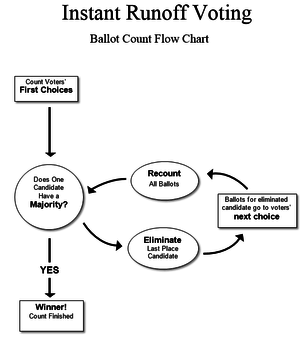You might have heard voter turnout for the June 24th primary wasn’t good. OK, of course you did, everyone wrote about it, even me with two excellent posts (#1 and #2.) The point is, nearly two months later and nothing has changed. When I say nothing, I mean the actual turnout numbers. Of course since the election is over, legally they can’t change. But that’s no excuse!
Since the election, I’ve read article after article on turnout. (Side note: For the record, I believe Maryland Juice provided the most comprehensive analysis of the actual numbers. You should check it out.) But enough about others, lets get back to paying attention to me. As I read these articles, I saw few mentions of the June release of the Report and Recommendations of the Right to Vote Task Force by the Montgomery County Task Force on Voting Rights. Worst of all, all the mentions were brief and only acknowledged the task force’s existence, not any of their work.
So then what is the Task Force on Voting Rights? Really great question. To answer this, it requires a flashback all the way back to September 2013. You’ll remember this month, I’m sure. It was the month Twitter announced they’re going public, the Federal Government shut down for 16 days, and someone named Robin Thicke topped the pop charts. Also, then-Montgomery County Council President Nancy Navarro (@nancy_navarro) introduced a resolution, unanimously supported by the entire council, creating a Task Force to study voting rights.
You can watch the Task Force’s Chair, Tim Male present the report to the Council here. Its mission was to increase participation and expand voting rights for the County’s residents. In the end, they produced a report containing 59 varied recommendations, including ways to make it easier to register to vote, expand the pool of eligible voters and, you could have guessed it, increase voter turnout.
I had a lot to learn, so I went straight to the source, Tim Male (@TimForTakoma.) During our talk, Tim brought up a question I hadn’t heard asked: Is it better to have 20% registered and 100% turnout, or 20% voter turnout of 100% of eligible residents registered? Recognizing 100% of both is the ideal, Tim nonetheless believed that the latter was better if you had to make a choice. I was not surprised that Tim had made me ask such a thoughtful question. He had a history of raising thoughtful questions with me since we met on his first campaign Takoma Park City Council (in full disclosure, I was Tim’s was campaign manager in 2011.)
My mind raced after our conversation. I’ve written two articles about raising turnout, not increasing participation! Who could have seen this twist coming? Don’t say our Founding Fathers, they saw just about everything coming.
I needed more, so I interviewed Patricia Hart (@patriciahart_fv) over at FairVote (@fairvote.) This organization’s mission is to reduce barriers in order to make every voice and vote count in an election. During the interview, something incredible happened: I got an amazing idea… from Patricia. She told me about a concept FairVote works on that would raise turnout, raise civility among campaigns and lower the stress on everyday voters: Ranked Choice Voting (RCV) or otherwise called, Instant Runoff Voting (IRV.)

RCV is a simple concept really. Instead of voting for one candidate, you rank the candidates according to your preference. A candidate must have a majority of votes, or 50% +1, to win. When you count votes, you count each voter’s first choice. If there is no winner, you eliminate the candidate with the fewest votes. Those that voted for the eliminated candidate have their second choice counted and added to the total of the remaining candidates. This keeps happening until a candidate has 50% +1 of the votes.
Montgomery County is no stranger to RCV. I actually ran into RCV when I ran Takoma Park City Councilman Jarrett Smith’s (@JarrettSmith) special election campaign. He was running against two other candidates, and Takoma Park uses RCV, which they call instant runoff voting (IRV.) Jarrett was in the lead after the votes counting completed, but didn’t have the majority needed to win. The 3rd place candidate was eliminated, and those voters had their second choice counted. Just like that, Jarrett had 50% +1 (well +16 but who’s counting?)
Well, as a campaign manager, I was close to exploding. Jarrett was in the lead after the first round of voting, what happens if he had lost during the second round of counting? For a candidate, campaign manager, or any campaign supporter, this system can be nerve wracking. But for the average voter, for Democracy, RCV can lead to huge wins. Here are the SportsCenter highlights of just a few of the wins:
Force campaigns to be civil –because if there’s a chance they’ll need the voters to make them their second choice, it’s not a good idea to slam another candidate. Don’t believe me? Check out this study.
Engage voters that campaigns normally won’t – Because campaigns will need a majority of votes now, it’s not a good idea to ignore any voting group, and expand the voting universe.
Voters can vote their conscious without feeling like it’s a wasted vote –Voters are empowered to make their first choice someone they truly believe in, regardless of how likely they are to win. Instead of facing the possibility of having to choose between the lesser of two evils, they can vote for the most desirable candidate, confident that it’s likely they’ll still have say in the final outcome.
Well this article took me by surprise. In my third post about how to increase voter turnout, I actually discuss an idea which might have a real impact on the problem of voter turnout. The very same problem that increasing registration could make worse.
Does this mean I’m a leader now? While your first answer might be no, in ranked choice voting, does that mean your second choice is yes? Think about it.
 Abe Saffer is a Director of State Advocacy for the American Diabetes Association. He has been active in politics and advocacy in Montgomery County, having served on the board of the Montgomery County Young Democrats, managed multiple local campaigns, and worked for Delegate Jeff Waldstreicher (D-18). In 2012 he received his Masters in Political Management with a concentration in political communication and campaigns from the Georges Washington University. He lives in 20910 (Silver Spring) with his wife, Tonya. In his free time, he runs the 2038 Congressional campaign for his son Carson.
Abe Saffer is a Director of State Advocacy for the American Diabetes Association. He has been active in politics and advocacy in Montgomery County, having served on the board of the Montgomery County Young Democrats, managed multiple local campaigns, and worked for Delegate Jeff Waldstreicher (D-18). In 2012 he received his Masters in Political Management with a concentration in political communication and campaigns from the Georges Washington University. He lives in 20910 (Silver Spring) with his wife, Tonya. In his free time, he runs the 2038 Congressional campaign for his son Carson.
Follow him on Twitter: @abesaffer
1 COMMENT
This area has an unusually high number of “vote for more than one” elections. Does Takoma’s FairVote system hit any of these, and either way, do you think that the effects of using FairVote would be any different in an election that takes the top three (state delegate) or four (County council at-large) “winners”, rather than just one?